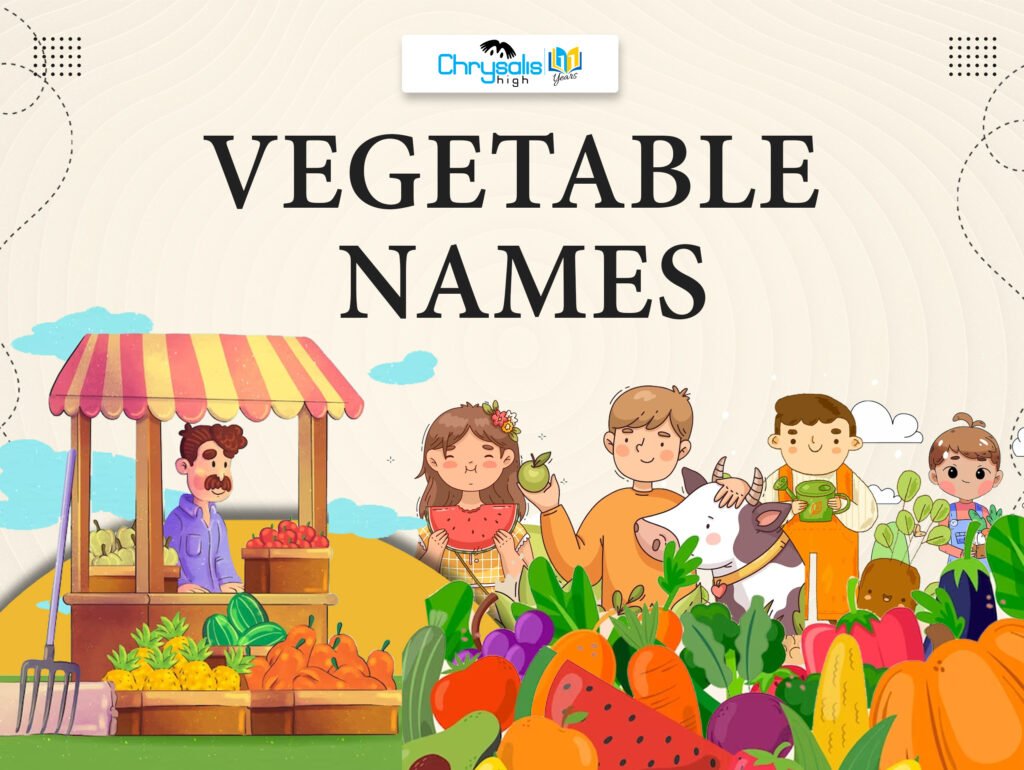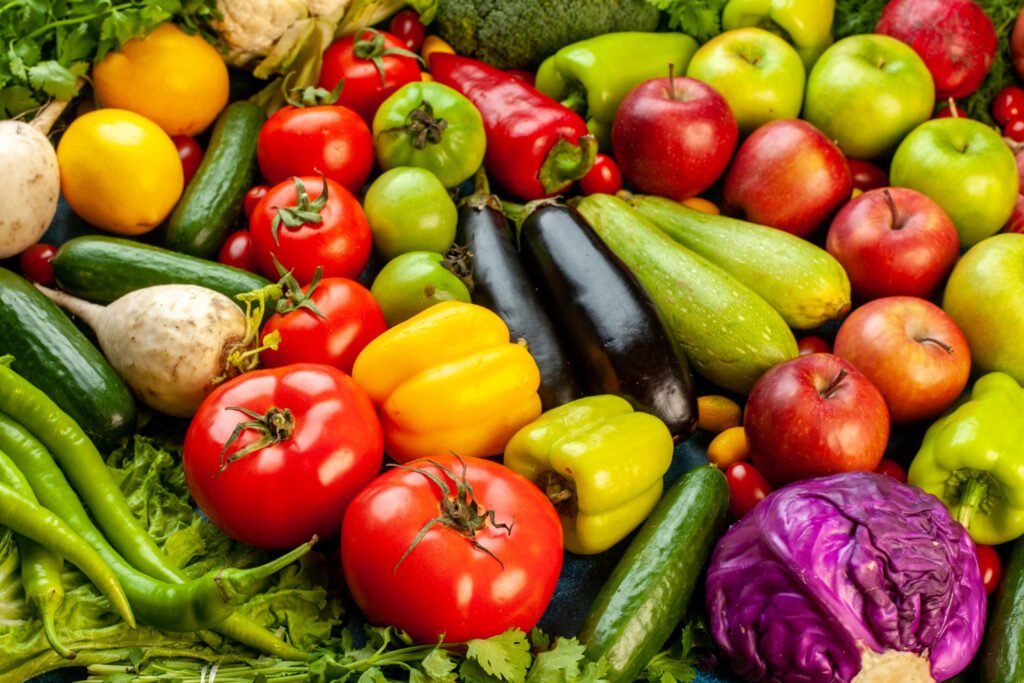
Acorn Squash
Acorn squash, also called pepper squash or Des Moines squash, is a winter squash with distinctive longitudinal ridges on its exterior and sweet, yellow-orange flesh inside.
Adzuki Beans

Vigna angularis, also known as the red bean, or red mung bean, adzuki bean, azuki bean, aduki bean, is an annual vine widely cultivated throughout East Asia for its small bean.
Amaranth Leaves
Amaranthus is a cosmopolitan genus of annual or short-lived perennial plants collectively known as amaranths. Some amaranth species are cultivated as leaf vegetables, pseudocereals, and ornamental plants.
Arracacha
Arracacia xanthorrhiza is a root vegetable that originates in the Andes, whose starchy taproot is a popular food item across South America where it is a major commercial crop.
Artichoke
The globe artichoke, also known by the names French artichoke and green artichoke in the U.S., is a variety of a species of thistle cultivated as food. The edible portion of the plant consists of the flower buds before the flowers come into bloom.
Ash Gourd
Benincasa hispida, the wax gourd, also called ash gourd, white gourd, winter gourd, winter melon, tallow gourd, ash pumpkin, Chinese preserving melon is a vine grown for its very large fruit, eaten as a vegetable when mature.
Asparagus
Asparagus, or garden asparagus, folk name sparrow grass, scientific name Asparagus officinalis, is a perennial flowering plant species in the genus Asparagus. Its young shoots are used as a spring vegetable.
Beetroot
The beetroot is the taproot portion of a beet plant, usually known in North America as beets while the vegetable is referred to as beetroot.
Basil
Basil, also called great basil, is a culinary herb of the family Lamiaceae. It is a tender plant, and is used in cuisines worldwide.
Bitter Gourd
Bitter Gourd is a tropical and subtropical vine of the family Cucurbitaceae, widely grown in Asia, Africa, and the Caribbean for its edible fruit. Its many varieties differ substantially in the shape and bitterness of the fruit.
Borage
Borage, also known as starflower, is an annual herb in the flowering plant family Boraginaceae. It is native to the Mediterranean region, and has naturalized in many other locales.
Bottle Gourd
Calabash, also known as bottle gourd, white-flowered gourd, long melon, birdhouse gourd, New Guinea bean, Tasmania bean, and opo squash, is a vine grown for its fruit.
Butternut Squash
Butternut squash, known in Australia and New Zealand as butternut pumpkin or gramma, is a type of winter squash that grows on a vine. It has a sweet, nutty taste similar to that of a pumpkin.
Burdock Root
Arctium lappa, commonly called greater burdock, gobō, edible burdock, lappa, beggar’s buttons, thorny burr, or happy major, is a Eurasian species of plants in the family Asteraceae, cultivated in gardens for its root used as a vegetable.
Beans
The guar or cluster bean, with the botanical name Cyamopsis tetragonoloba, is an annual legume and the source of guar gum. It is also known as gavar, gawar, or guvar bean.
Broccoli
Broccoli is an edible green plant in the cabbage family whose large flowering head, stalk and small associated leaves are eaten as a vegetable.
Bok Choy
Bok choy, pak choi or pok choi is a type of Chinese cabbage, used as food. Chinensis varieties do not form heads and have green leaf blades with lighter bulbous bottoms instead, forming a cluster reminiscent of mustard greens.
Carrot
The carrot is a root vegetable, typically orange in color, though heirloom variants including purple, black, red, white, and yellow cultivars exist, all of which are domesticated forms of the wild carrot, Daucus carota, native to Europe and Southwestern Asia.
Cauliflower
Cauliflower is one of several vegetables in the species Brassica oleracea in the genus Brassica, which is in the Brassicaceae family. It is an annual plant that reproduces by seed. Typically, only the head is eaten – the edible white flesh is sometimes called “curd”.
Cabbage
Cabbage, comprising several cultivars of Brassica oleracea, is a leafy green, red, or white biennial plant grown as an annual vegetable crop for its dense-leaved heads.
Corn
Maize, also known as corn in North American and Australian English, is a cereal grain first domesticated by indigenous peoples in southern Mexico about 10,000 years ago.
Coccinia
The scarlet gourds are a genus with 25 species. It is distributed in sub-Saharan Africa and with one species, C. grandis also in South Asia and Southeast Asia, and it is also introduced into the New World. Incidentally, C. grandis is also a cultivated crop and it is used for culinary and medical purposes.
Chili
Chili peppers, from Nahuatl chīlli, are varieties of the berry-fruit of plants from the genus Capsicum, which are members of the nightshade family Solanaceae, cultivated for their pungency. Chili peppers are widely used in many cuisines as a spice to add “heat” to dishes.
Chayote
Chayote, also known as mirliton and choko, is an edible plant belonging to the gourd family, Cucurbitaceae. This fruit was first cultivated in Mesoamerica between southern Mexico and Honduras, with the most genetic diversity available in both Mexico and Guatemala.
Celery
Celery is a marshland plant in the family Apiaceae that has been cultivated as a vegetable since antiquity. Celery has a long fibrous stalk tapering into leaves. Celery seed powder is used as a spice.
Cucumber
The cucumber is a widely-cultivated creeping vine plant in the family Cucurbitaceae that bears cylindrical to spherical fruits, which are used as culinary vegetables.
Cassava
Cassava is a root vegetable. People use the root as a food and to make medicine. Cassava is used for tiredness, dehydration in people with diarrhea. Cassava root and leaves are eaten as food.
Capsicum
Capsicum is a genus of flowering plants in the nightshade family Solanaceae, native to the Americas, cultivated worldwide for their chili pepper or bell pepper fruit.
Caper
Capparis spinosa, the caper bush, also called Flinders rose, is a perennial plant that bears rounded, fleshy leaves and large white to pinkish-white flowers. The plant is best known for the edible flower buds, used as a seasoning or garnish, and the fruit, both of which are usually consumed salted or pickled.
Daikon Radish
Daikon or mooli, Raphanus sativus var. longipinnatus, is a mild-flavored winter radish usually characterized by fast-growing leaves and a long, white, napiform root.
Datil Pepper
The datil is a very hot pepper, a variety of the species Capsicum chinense. Datil peppers are cultivated throughout the United States and elsewhere, but the majority are produced in St. Augustine, Florida.
Dill
Dill Leaves, also known as Dill weed is a green leafy vegetable that has incredible therapeutic benefits and culinary applications.
Drumstick
Moringa oleifera is a fast-growing, drought-resistant tree of the family Moringaceae, native to the Indian subcontinent and used extensively in South and Southeast Asia. Common names include moringa, drumstick tree, horseradish tree, or malunggay.
Elephant foot yam
Amorphophallus paeoniifolius, the elephant foot yam or whitespot giant arum, is a tropical plant native to Island Southeast Asia. It is cultivated for its edible tubers in Southeast Asia, South Asia, Madagascar, New Guinea, and the Pacific islands.
Eggplant
Eggplant, aubergine, brinjal, or baigan is a plant species in the nightshade family Solanaceae. Solanum melongena is grown worldwide for its edible fruit. Most commonly purple, the spongy, absorbent fruit is used in several cuisines. Typically used as a vegetable in cooking, it is a berry by botanical definition.
Endive
Endive is a leaf vegetable belonging to the genus Cichorium, which includes several similar bitter-leafed vegetables.
Fava Beans
Vicia faba, commonly known as the broad bean, fava bean, or faba bean, is a species of vetch, a flowering plant in the pea and bean family Fabaceae. It is widely cultivated as a crop for human consumption, and also as a cover crop.
Fenugreek
Fenugreek is an annual plant in the family Fabaceae, with leaves consisting of three small obovate to oblong leaflets. It is cultivated worldwide as a semiarid crop. Its seeds and leaves are common ingredients in dishes from the Indian subcontinent, and have been used as a culinary ingredient since ancient times.
Flat beans
Flat beans, also known as helda beans, romano beans and “sem fhali” in some Indian states, are a variety of Phaseolus coccineus, known as runner bean with edible pods that have a characteristic wide and flat shape. Flat beans are normally cooked, and served as the whole pods, the same way as other green beans.
French beans
Green beans are young, unripe fruits of various cultivars of the common bean, although immature or young pods of the runner bean, yardlong bean, and hyacinth bean are used in a similar way. Green beans are known by many common names, including French beans, string beans, and snap beans or simply “snaps.”
French Sorrel
Rumex scutatus is a plant in the buckwheat family, used as a culinary herb. Its common names include French sorrel, buckler sorrel, shield-leaf sorrel, and sometimes the culinary name “green-sauce”. As a culinary herb, it is used in salads, soups, and sauces.
Garlic
Garlic is a species of bulbous flowering plant in the genus Allium. Its close relatives include the onion, shallot, leek, chive, Welsh onion, and Chinese onion.
Ginger
Ginger is a flowering plant whose rhizome, ginger root or ginger, is widely used
as a spice and a folk medicine. It is a herbaceous perennial which grows annual pseudostems about one meter tall, bearing narrow leaf blades.
Gherkins
A gherkin is a small variety of a cucumber that’s been pickled. It’s a little cucumber that’s been pickled in a brine, vinegar, or other solution and left to ferment for a period of time.
Hubbard Squash
Hubbard squash is a large, roundish winter squash with a hard, bumpy skin. It can be dark green, pale blue-green, orange, or yellow. The flesh inside is yellow to orange, and is tender, fine-grained, and dense.
Haricot Beans
The navy bean, haricot bean, pearl haricot bean, Boston bean, white pea bean, or pea bean is a variety of the common bean native to the Americas, where it was first domesticated. It is a dry white bean that is smaller than many other types of white beans, and has an oval, slightly flattened shape.
Iceberg Lettuce
Iceberg lettuce, also known as crisp head lettuce, has pale green leaves and grows in cabbage-like bulbs. It grows best in cool climates and requires a long winter season to grow fully. Lettuce and other leafy greens make up an important part of a healthy diet.
Italian Pepper
The friggitello is a sweet Italian chili pepper of the species Capsicum annuum. It is also known as the Golden Greek pepper, Sweet Italian pepper, or Tuscan pepper. In the United States they may be called “pepperoncini”; they are quite distinct from Italian peperoncini, which are hot Italian chili peppers.
Jicama
Pachyrhizus erosus, commonly known as jícama or Mexican turnip, is a native Mexican vine, although the name jícama most commonly refers to the plant’s edible tuberous root. It is in the pea family.
Jalapeno
The jalapeño is a medium-sized chili pepper pod type cultivar of the species Capsicum annuum. A mature jalapeño chili is 5–10 cm long and hangs down with a round, firm, smooth flesh of 25–38 mm wide. It can have a range of pungency, with Scoville heat units of 4,000 to 8,500.
Kale
Kale, also called leaf cabbage, belongs to a group of cabbage cultivars grown for their edible leaves, although some are used as ornamentals. Kale plants have green or purple leaves, and the central leaves do not form a head.
Kabocha Squash
Kabocha is a type of winter squash, a Japanese variety of the species Cucurbita maxima. It is also called kabocha squash or Japanese pumpkin in North America.
Kohlrabi
Kohlrabi, also called German turnip or turnip cabbage, is a biennial vegetable, a low, stout cultivar of wild cabbage. It is a cultivar of the same species as cabbage, broccoli, cauliflower, kale, Brussels sprouts, collard greens, Savoy cabbage, and gai lan. It can be eaten raw or cooked.
Kai Lan
Gai lan, kai-lan, Chinese broccoli, or Chinese kale is a leafy vegetable with thick, flat, glossy blue-green leaves with thick stems, and florets similar to broccoli.
Leeks
The leek is a vegetable, a cultivar of Allium ampeloprasum, the broadleaf wild leek. The edible part of the plant is a bundle of leaf sheaths that is sometimes erroneously called a stem or stalk.
Lettuce
Lettuce is an annual plant of the family Asteraceae. It is most often grown as a leaf vegetable, but sometimes for its stem and seeds. Lettuce is most often used for salads, although it is also seen in other kinds of food, such as soups, sandwiches and wraps; it can also be grilled.
Lima Beans
A lima bean, also commonly known as the butter bean, sieva bean, double bean or Madagascar bean is a legume grown for its edible seeds or beans.
Long Beans
The asparagus bean is a legume cultivated for its edible green pods containing immature seeds, like the green bean. It is also known as: yardlong bean, pea bean, long-podded cowpea, Chinese long bean, snake bean, bodi, and bora.
Lotus Root
Lotus root is an edible rhizome, a bulb from the flower of the same name that can be peeled, sliced, and eaten raw or cooked. It’s an ancient ingredient used by emperors and villagers alike and proves so versatile, chefs have used the lotus root in salads and soups.
Malabar Spinach
Basella alba is an edible perennial vine in the family Basellaceae. It is found in tropical Asia and Africa where it is widely used as a leaf vegetable. It is native to the Indian subcontinent, Southeast Asia and New Guinea.
Malanga
Malanga is a root vegetable. Possible health benefits of malanga include managing cholesterol, blood pressure, weight, and more.
Mustard Greens
Mustard leaves are used to make the famous Punjabi delicacy Sarsoon ka Saag. It is very popularly chopped finely, boiled and cooked along with other greens like spinach and fenugreek.
Napa Cabbage
Napa cabbage is a type of Chinese cabbage originating near the Beijing region of China that is widely used in East Asian cuisine.
Negi Onion
Negi is the Japanese name for Allium fistulosum, also known as the Welsh onion. It’s a variety of scallion with a flavor that’s a cross between a leek and a scallion. The greens are fresh and aromatic, while the whites have a pungent onion flavor that sweetens and mellows when cooked.
Onion
An onion, also known as the bulb onion or common onion, is a vegetable that is the most widely cultivated species of the genus Allium. The shallot is a botanical variety of the onion which was classified as a separate species until 2011. Its close relatives include garlic, scallion, leek, and chive.
Okra
Okra, Abelmoschus esculentus, known in some English-speaking countries as lady’s fingers, is a flowering plant in the mallow family. It has edible green seed pods. The geographical origin of okra is disputed, with supporters of West African, Ethiopian, Southeast Asian, and South Asian origins.
Pandan
It has fragrant leaves which are used widely for flavouring in the cuisines of Southeast Asia.
Potato
Potato is a starchy food, a tuber of the plant Solanum tuberosum, and a root vegetable native to the Americas.
Peas
The pea is most commonly the small spherical seed or the seed-pod of the flowering plant species Lathyrus oleraceus. Each pod contains several peas, which can be green or yellow.
Parsnip
The parsnip is a root vegetable closely related to carrot and parsley, all belonging to the flowering plant family Apiaceae. It is a biennial plant usually grown as an annual. Its long taproot has cream-colored skin and flesh, and, left in the ground to mature, becomes sweeter in flavor after winter frosts.
Parsley
Parsley, or garden parsley is a species of flowering plant in the family Apiaceae that is native to Greece, Morocco and the former Yugoslavia. It has been introduced and naturalized in Europe and elsewhere in the world with suitable climates, and is widely cultivated as a herb, and a vegetable.
Pearl Onions
The pearl onion, also known as button, baby or silverskin onion in the UK, is a close relative of the leek, and may be distinguished from common onions by having only a single storage leaf, similar to cloves of garlic. In French they are known as oignon grelot.
Pumpkin
A pumpkin is a vernacular and typical term for a cultivated orange and round mature winter squash of species and varieties in the genus Cucurbita that has culinary and cultural significance and depending on the vernacular, its color and shape may vary.
Radish
The radish is an edible root vegetable of the family Brassicaceae that was domesticated in Asia prior to Roman times. Radishes are grown and consumed throughout the world, being mostly raw as a crunchy salad vegetable with a pungent, slightly spicy flavor, varying in intensity depending on its growing environment.
Rhubarb
Rhubarb is the fleshy, edible stalks of species and hybrids of Rheum in the family Polygonaceae, which are cooked and used for food. The plant is a herbaceous perennial that grows from short, thick rhizomes.
Ridge Gourd
Luffa acutangula is a cucurbitaceous vine that is commercially grown for its unripe fruits as a vegetable. Mature fruits are used as natural cleaning sponges. Its fruit slightly resembles a cucumber or zucchini with ridges. It ranges from central and eastern Asia to southeastern Asia.
Rutabaga
Rutabaga or swede is a root vegetable, a form of Brassica napus. Other names include Swedish turnip, neep, and turnip. However, elsewhere, the name “turnip” usually refers to the related white turnip. The species Brassica napus originated as a hybrid between the cabbage and the turnip.
Spinach
Spinach is a leafy green flowering plant native to central and Western Asia. It is of the order Caryophyllales, family Amaranthaceae, subfamily Chenopodioideae. Its leaves are a common edible vegetable consumed either fresh, or after storage using preservation techniques by canning, freezing, or dehydration.
Sweet Potatoes
The sweet potato or sweetpotato is a dicotyledonous plant that belongs to the bindweed or morning glory family, Convolvulaceae. Its large, starchy, sweet-tasting tuberous roots are used as a root vegetable. The young shoots and leaves are sometimes eaten as greens.
Snap Peas
The snap pea, also known as the sugar snap pea, is an edible-pod pea with rounded pods and thick pod walls, in contrast to snow pea pods, which are flat with thin walls.
Snake Gourd
Trichosanthes cucumerina is a tropical or subtropical vine. Its variety T. cucumerina var. anguina raised for its strikingly long fruit. In Asia, it is eaten immature as a vegetable much like the summer squash and in Africa, the reddish pulp of mature snake gourd is used as an economical substitute for tomato.
Swiss Chard
Chard or Swiss chard is a green leafy vegetable. In the cultivars of the Flavescens Group, the leaf stalks are large and often prepared separately from the leaf blade; the Cicla Group is the leafy spinach beet. The leaf blade can be green or reddish; the leaf stalks are usually white, yellow or red.
Spring Onion
Scallions are vegetables derived from various species in the genus Allium. Scallions generally have a milder taste than most onions and their close relatives include garlic, shallot, leek, chive, and Chinese onions.
Snow Pea
The snow pea is an edible pod pea with flat pods and thin pod walls. It is eaten whole, with both the seeds and the pod, while still unripened.
Swedes
Rutabaga or swede is a root vegetable, a form of Brassica napus. Other names include Swedish turnip, neep, and turnip. However, elsewhere, the name “turnip” usually refers to the related white turnip. The species Brassica napus originated as a hybrid between the cabbage and the turnip.
Turnip
The turnip or white turnip is a root vegetable commonly grown in temperate climates worldwide for its white, fleshy taproot. Small, tender varieties are grown for human consumption, while larger varieties are grown as feed for livestock.
Tomato
The tomato is the edible berry of the plant Solanum lycopersicum, commonly known as the tomato plant. The species originated in western South America, Mexico, and Central America. The Nahuatl word tomatl gave rise to the Spanish word tomate, from which the English word tomato derived.
Taro
Taro is a root vegetable. It is the most widely cultivated species of several plants in the family Araceae that are used as vegetables for their corms, leaves, stems and petioles. Taro corms are a food staple in African, Oceanic, East Asian, Southeast Asian and South Asian cultures.
Ube
ube is a purple yam whose glimmering purple center, mild, sweet flavor, and coconut-like aroma have made it a popular ingredient in traditional Filipino sweets.
Wasabi
Wasabi or Japanese horseradish is a plant of the family Brassicaceae, which also includes horseradish and mustard in other genera.
Water Chestnut
Water chestnuts are starchy root vegetables that grow in marshes, underwater, or in mud. They are also known as Eleocharis dulcis.
Yam
Pachyrhizus erosus, commonly known as jícama or Mexican turnip, is a native Mexican vine, although the name jícama most commonly refers to the plant’s edible tuberous root. It is in the pea family.
Zucchini
The zucchini, courgette or baby marrow is a summer squash, a vining herbaceous plant whose fruit are harvested when their immature seeds and epicarp are still soft and edible. It is closely related, but not identical, to the marrow; its fruit may be called marrow when mature.
For further exploration of educational content and insights, delve into the resources available on Chrysalis High.
FAQ
What are some common vegetable names?
Common vegetable names include carrots, broccoli, spinach, tomatoes, and potatoes, among others.
Are vegetable names different in various languages?
Yes, vegetable names can vary in different languages. For example, “tomato” is “tomate” in Spanish and “pomme de terre” in French for “potato.”
How can I learn the names of vegetables in different languages?
You can learn vegetable names in various languages through language apps, online resources, or by connecting with native speakers.
Why is it important to know vegetable names in different languages?
Knowing vegetable names in different languages can be helpful when travelling, shopping for international ingredients, or communicating with people from diverse backgrounds.


